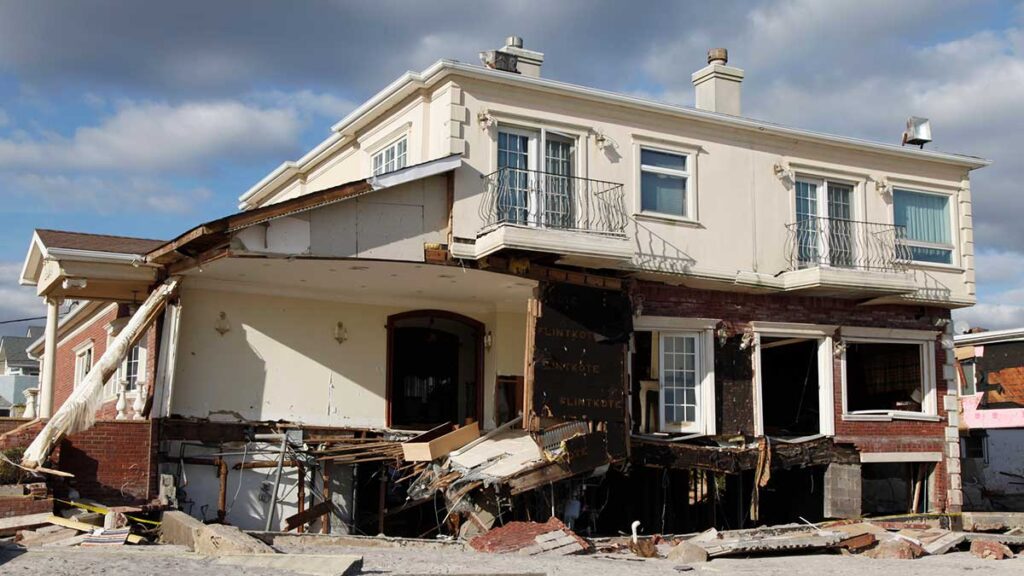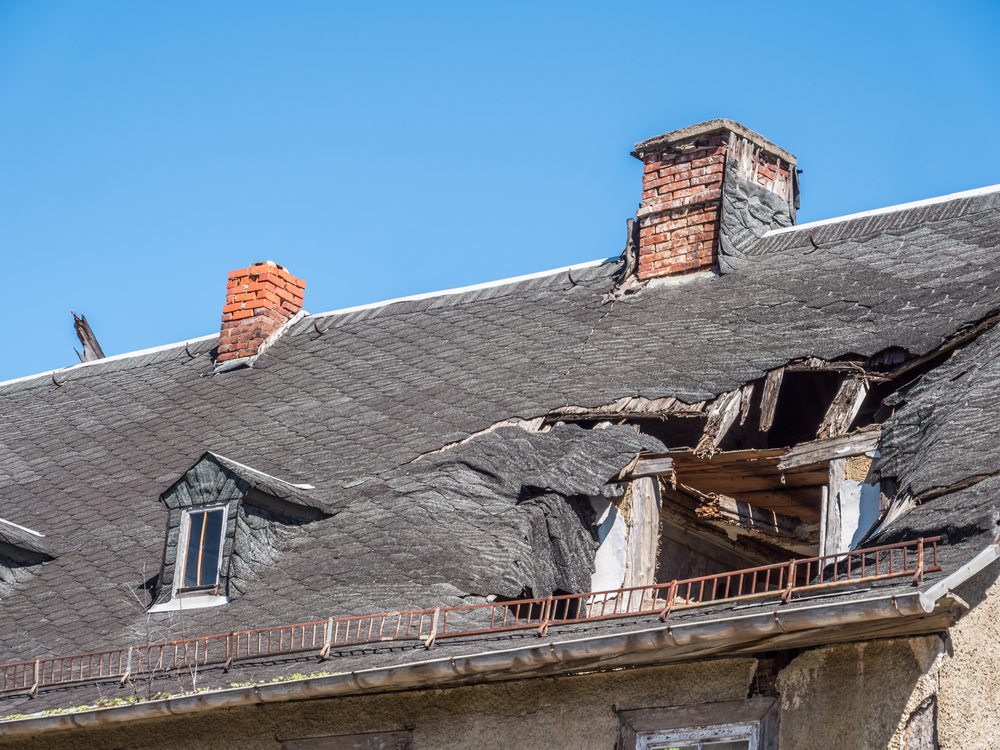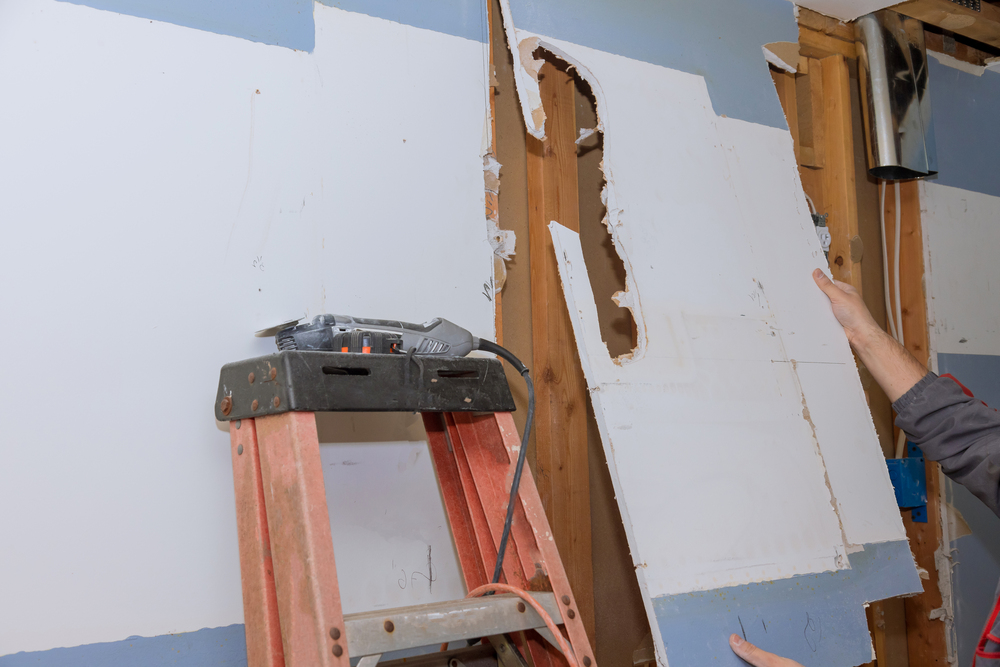
Rest Easy this Hurricane Season.
The urgency to rebuild and restore your home or business can often lead to hasty decisions, making you vulnerable to contractors prioritizing a quick profit over proper repairs. In these challenging times, it is essential to have the right guidance and support to navigate the repair process with confidence.
This guide will help you understand the process of finding reliable contractors, the role of a structural engineer in ensuring the best outcomes, and how to rebuild your property—and your life—after a hurricane.
Who to Turn to After a Devastating Storm Upturns Your Life?
After hurricanes or tropical storms, property owners often face overwhelming stress and confusion. The emotional impact of seeing your home or business damaged or destroyed can make you feel vulnerable, anxious, and desperate for quick solutions.
Unfortunately, this is when opportunistic hurricane repair contractors strike, offering fast fixes that may not address the full scope of damage.
Structural Engineers: An asset in storm damage restoration.
Structural engineers are the best equipped to navigate structural damage repair after a devastating storm. They are a neutral third party that can ensure you are not left exposed when at your most vulnerable.
The Process of Rebuilding Your Life After a Storm
Rebuilding your life after a storm involves more than just physical repairs; it’s about restoring your sense of security and normalcy. This process begins with a clear understanding of the damage sustained and a strategic approach to recovery.
- Comprehensive Damage Assessment: A thorough assessment of the storm damage is critical before any repairs begin. A structural engineer can evaluate the extent of structural damage, water damage, and other issues to create a complete picture of what needs to be done.
- Planning for Long-Term Recovery: Develop a plan that prioritizes essential repairs, addresses safety concerns, and considers future resilience against natural disasters.
Storm Damage Restoration: What You Need to Know
- Choosing the Right Contractor: Look for licensed contractors with a strong track record in your area who are insured and experienced in dealing with hurricane damage. They should be able to provide references and demonstrate a commitment to quality work.
- Red Flags to Watch For: Be wary of contractors who demand large upfront payments, use high-pressure sales tactics, or suggest skipping permits and inspections. These are often signs of a contractor looking to take advantage of your situation.
The Importance of Reliable Property Damage Repair Services
Storm damage repair is not just about fixing visible damage; it involves a comprehensive approach to ensure your property is safe, functional, and protected against future storms.
This includes addressing structural damage, water damage, and other issues that could compromise the integrity of your building.
- Immediate Action to Prevent Further Damage: Quick repairs to roof leaks, broken windows, and other critical areas are necessary to prevent additional damage from occurring.
- Long-Term Solutions for Lasting Resilience: Effective storm damage repair involves using high-quality materials and proven techniques to strengthen your property against future hurricane-force winds.

Storm Damage Restoration: A Step-by-Step Process
Storm damage restoration involves several stages, each designed to address specific aspects of damage and restore your property to its pre-loss condition.
- Initial Inspection and Assessment: A structural engineer or storm damage repair specialist conducts a comprehensive inspection to document all damage and develop a restoration plan.
- Water Removal and Mold Remediation: Addressing water damage is critical to prevent mold growth and further structural damage. Water extraction, drying, and mold remediation are essential steps.
- Structural Repairs: Repairs to the building’s structure, such as walls, foundations, and roofs, are crucial for restoring safety and stability.
- Finishing and Restoration: The final stages involve cosmetic repairs, such as painting, flooring, and restoring the property’s interior to its original condition.
Addressing Structural Damage: The Role of a Structural Engineer
Storm damage caused by high winds, debris, and flooding can compromise the integrity of your home or business, making it unsafe for occupancy and leaving you stranded. Start your disaster recovery in the right way.
- Thorough Structural Assessment: A structural engineer plays a vital role in assessing the full extent of structural damage, ensuring that all issues are identified and addressed.
- Developing a Repair Plan: Based on the assessment, the engineer will develop a detailed repair plan that includes the necessary steps to restore your property’s structural integrity.
Hurricane, flooding and tropical storm: Preparing for Future
Storm damage is an ongoing risk, particularly in areas prone to hurricanes, tropical storms, and other natural disasters.
- Reinforcing Vulnerable Areas: Upgrading windows, doors, and roofs to withstand high winds and flying debris can significantly reduce the risk of damage in future storms.
- Regular Inspections and Maintenance: Property inspections can help identify potential weaknesses and ensure your home is always ready to face severe weather.
Finding the Right Storm Damage Restoration Contractors
Here’s how to find a contractor to provide quality work and protect your interests.
- Work with a Structural Engineer: A structural engineer can help you evaluate contractor quotes, ensuring all necessary repairs are included and priced reasonably.
- Verify Credentials and Experience: Ensure the contractor is licensed, insured, and experienced in storm damage restoration. Check reviews, ask for references, and verify their track record with previous clients.
- Ask for Multiple Quotes: Don’t settle for the first quote you receive. Getting multiple quotes allows you to compare prices, services, and timelines to find the best fit for your needs.
Red Flags When Choosing a Contractor
While many contractors are reputable, others may try to take advantage of your situation. Here are some red flags to watch out for:
- High-Pressure Tactics: Contractors who pressure you to make quick decisions or sign contracts immediately are often more interested in their profit than your best interests.
- Lack of Proper Documentation: Avoid contractors unwilling to provide written estimates, proof of insurance, or details about the work they will perform.
- Demand for Large Upfront Payments: Be cautious of contractors who demand large payments before work begins. A reputable contractor will have a reasonable payment schedule based on project milestones.
Navigating Insurance Claims: Ensuring Fair Compensation
Navigating claims after a hurricane can be a stressful process. Insurance companies often aim to minimize payouts, while some contractors may inflate costs. A structural engineer can help balance these interests and restore your property to a pre-disaster state.
- Accurate Damage Documentation: A structural engineer provides a detailed damage assessment, essential for supporting your insurance claim.
- Advocating for Fair Compensation: Engineers work with you to ensure that the repair costs submitted to your insurance company are based on actual damage and necessary repairs within your insurance coverage.
- Avoiding Unnecessary Repairs: With professional oversight, you can avoid paying for unnecessary or inflated repair costs that do not address the damage.
The Benefits of Working with a Structural Engineer
A structural engineer is a critical ally in storm damage repair, providing expertise, guidance, and advocacy to protect your interests.
- Objective Evaluation: Unlike contractors who may have a financial interest in the scope of work, a structural engineer provides an unbiased assessment of the damage.
- Guidance on Repair Methodology: Engineers ensure the proposed repair methods are safe, effective, and compliant with local building codes.
- Support in Contractor Selection: Engineers help you evaluate contractor proposals, ensuring you select a reputable professional to provide quality work at a fair price.
Upfront Costs: What to Expect
Understanding the potential upfront costs associated with storm damage repair can help you plan your recovery budget.
- Damage Assessment Fees: Hiring a structural engineer for a comprehensive damage assessment is a valuable investment that can save you money in the long run by preventing unnecessary repairs and ensuring that all damage is properly addressed.
- Temporary Repairs and Debris Removal: To prevent further damage, temporary repairs, such as covering roof leaks or removing debris, may require some initial costs. In contrast, a long-term repair plan is developed.
- Down Payments to Contractors: A reasonable down payment is typically required to begin work, but be wary of contractors who demand a large percentage of the total cost upfront.

The Role of Storm Damage Restoration Specialists
Storm damage restoration specialists provide a comprehensive approach to rebuilding after a hurricane. They address all aspects of damage and ensure that your property is restored to its pre-loss condition.
- Coordinated Recovery Efforts: These specialists work closely with structural engineers, contractors, and insurance companies to ensure that every step of the restoration process is completed efficiently and effectively.
- Comprehensive Services: From water damage restoration services to structural repairs and mold remediation, restoration specialists provide all the services needed to return your home or business to a safe, functional state.
Long-Lasting Repairs: Rebuilding Stronger
Rebuilding stronger after a hurricane means making improvements that reduce the risk of damage in future storms.
- Resilient Building Materials: Using materials designed to withstand high winds, flooding, and other severe weather conditions can better protect your property.
- Preventive Measures: Installing storm shutters, reinforcing roofs, and improving drainage are all steps that can help protect your home from future damage.
The Financial Aspect: Planning for the Future
Understanding the financial aspects of storm damage repair can help you plan for future resilience.
- Investing in Quality Repairs: While upfront costs may be higher, investing in quality repairs now can save you money in the long run by preventing future damage.
- Budgeting for Regular Maintenance: Regular inspections and maintenance can help identify potential vulnerabilities before they become significant problems.
Preparing Your Property for Future Storms
Once your home is restored, thinking about future protection against hurricanes and other severe weather events is essential.
- Reinforce and Upgrade: Strengthen your property’s defenses by upgrading to storm-resistant materials and systems.
- Regular Inspections: Schedule regular inspections with a structural engineer to identify and address potential weaknesses.
Navigating the Emotional Aspect of Rebuilding
Rebuilding your home after a hurricane is not just about repairing a structure; it’s about restoring your peace of mind and sense of safety.
- Finding the Right Support: Lean on professionals like structural engineers and reputable contractors who understand your situation and are committed to helping you rebuild safely and effectively.
- Taking It Step-by-Step: Remember that recovery is a process. Allow yourself the time and space to make careful, informed decisions, prioritizing your safety and well-being.
Conclusion: The Structural Engineer—Helping You Rebuild Your Home and Your Life
Rebuilding after a hurricane is a complex, emotional journey that requires careful planning and professional guidance.
A structural engineer is your advocate throughout the storm damage repair process, ensuring that every decision—from choosing the right contractor to navigating insurance claims—is made in your best interest. By focusing on thorough assessments, quality repairs, and future resilience, you can rebuild your home more potently and safely and, in doing so, begin to rebuild your life.
With the right support, you can confidently navigate the challenges of storm recovery, knowing that your property is in good hands and your future is secure.





